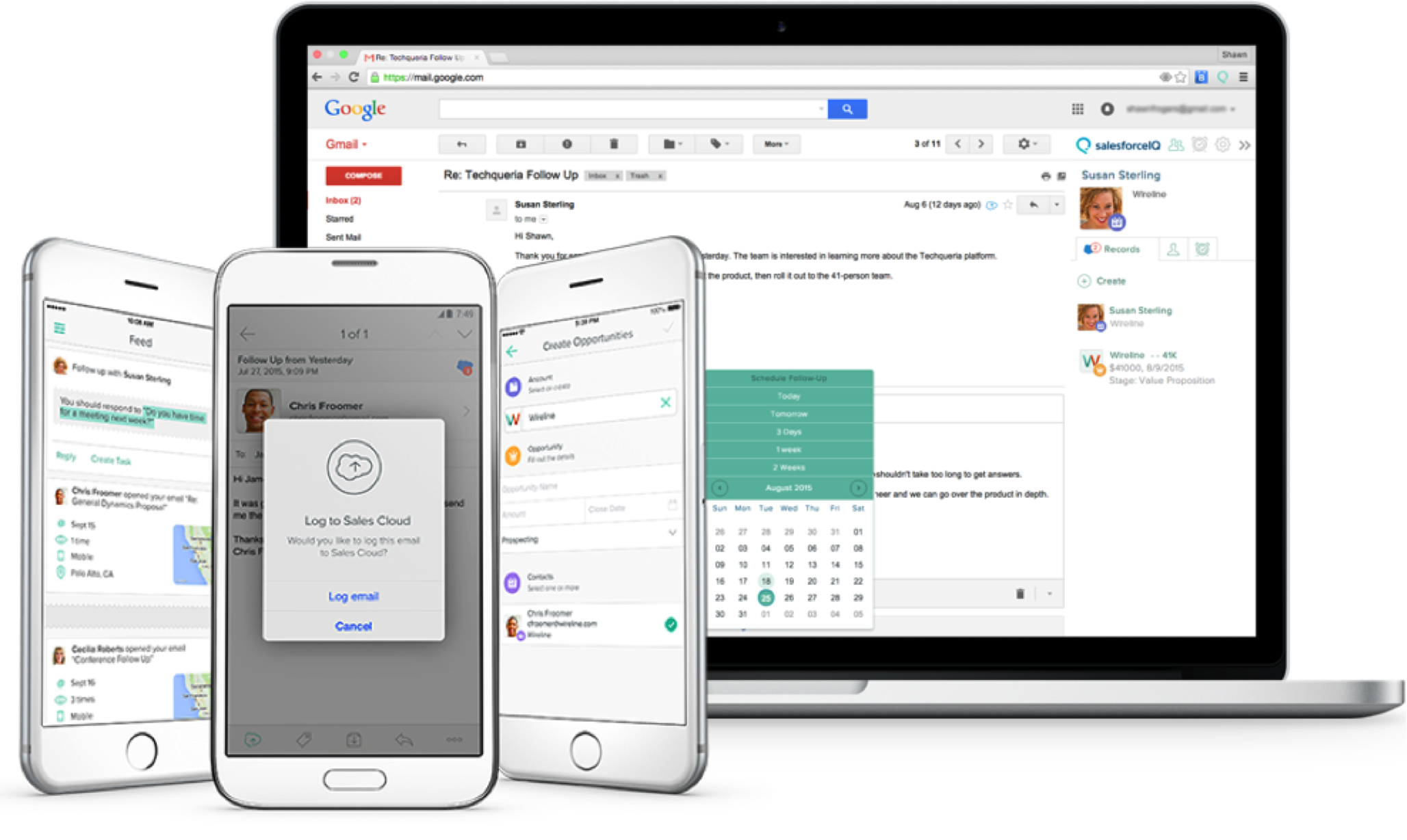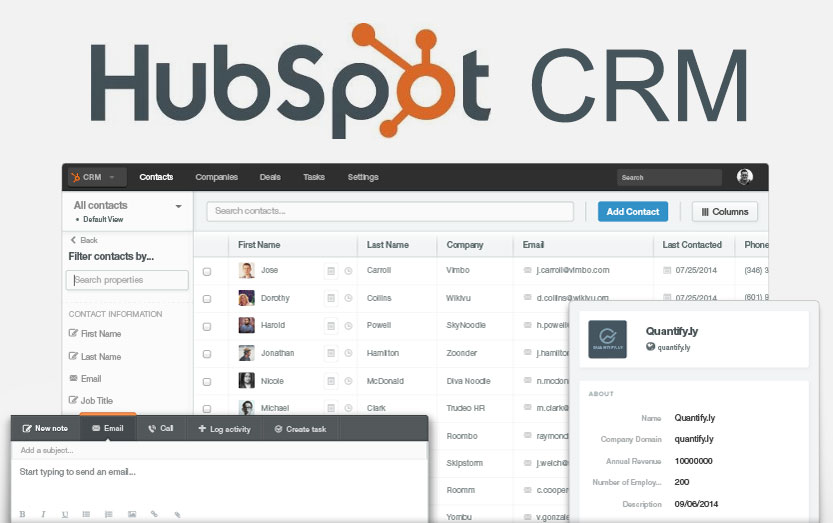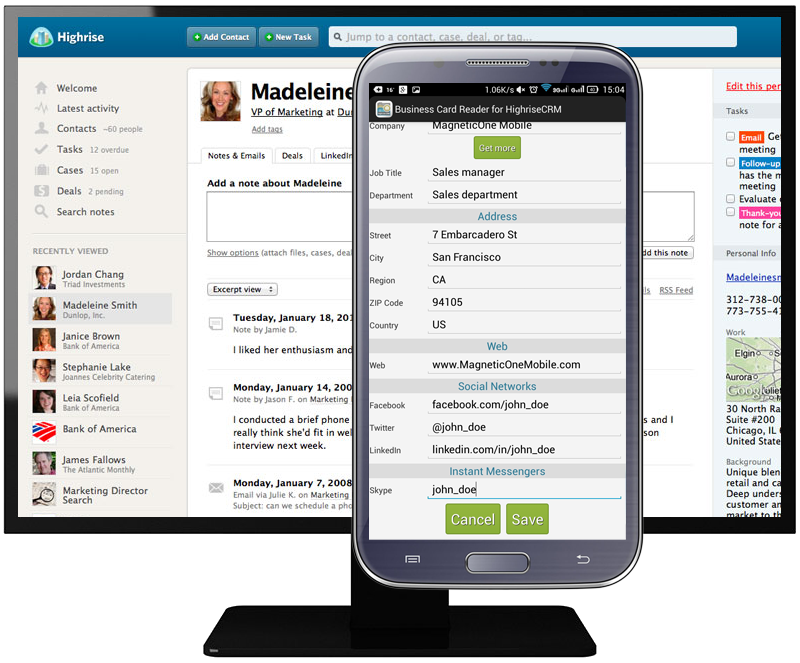Which CRM Works Best for Generating Leads?
CRM software is a marketer’s best friend.
Sure, email marketing is a great tool to generate new leads to bring in potential customers, but a CRM goes above and beyond, thanks in part to the R in its acronym – Relationships.
CRMs are designed to help you build relationships with potential (and current) customers, and do so by connecting someone from your team to each customer. When someone receives an email from your company, they’re slowly building rapport.
But not every piece of CRM software works the same way, and while they’re all designed to help you in your ultimate goal to understand and relate to your customers, each one will approach that goal differently. Some use certain methods for lead generation, which may be more effective for your company, while others may not actually help you all that much.
So how do you know which CRM is right for you? Well, first you have to identify the lead generation methods that will be the most effective for your company and your consumer base.
Best Methods for Lead Generation

When you boil it down, lead generation is all about relationships, but relationships between customers and businesses don’t always happen naturally. Visitors need to be pointed to information (or team members) that can help turn them into customers.
But what exactly is the best way to do that? There are a few different approaches that may work, depending on your industry and customer base.
- Relationship building through regular emails. Email marketing is no doubt a highly effective tool, and many customers love (or at least tolerate) receiving emails from companies on a daily or weekly basis, whether it be links to articles and blogs or specific promotions or discounts.
- A hard sell via a member from a sales team. This can happen through emails, phone calls, chats, or really any method of communication, but the purpose is to connect each customer with a real live member of the team to answer their questions and help them move from visitor to customer.
- A tailored marketing experience through varied channels. This includes tracking the visitor or customer’s interactions while they’re on your site, gathering personal information about their interests and disinterests, and implementing marketing strategies to target their “wish list.” For example, Google Ads reads your browsers cookies, so they know what you’ve been searching for on sites like Amazon and Facebook and can target ads specifically to your searches.
So how do CRMs fit into this? Again, while each CRM will help you generate leads, each has a different function best designed for one or more of these approaches.
What to Look for in a CRM
Generally speaking, there are three types of CRMs: ones that work conversationally, ones that focus on leads and deals, and those that utilize contacts.
- A conversational CRM is centered on interactions between your customers and your business, and will group different interactions by categories so you can see exactly what your customers are doing, or where you need to follow up. It essentially helps you keep in contact with the customers that matter most to you.
- A leads and deals CRM – often the most common form – tracks potential customer leads and adds information as you work to convince those leads to become “deals.” These CRMS help you trace visitors from their first interactions until they become full-fledged customers. These CRMs are most utilized by sales teams.
- A contacts-based CRM is similar to a conversational CRM in that it helps you interact with customers, but this type focuses more on remembering important information about a customer – like birthdays, current company position, etc. – in order to help you send promotions that might relate to them. In some ways, it’s the best of the other types and can be used for both sales generation and building relationships. That is, as long as you have a process in place for targeted promotions.
The key to using a CRM is to make sure it’s genuinely productive for your team, and not a burden to those using it. When you’re looking to select a CRM, it’s best to know the method most likely to help visitors turn into customers, and also which CRM type fits best with that method.
CRM Top Picks for Leads
Once you’ve matched the method with the type, you’ll then need to choose a specific CRM software, which will be dependent on factors like overall cost and ease of use for your team. Let’s take a look at a couple of the top CRMs in each category. Keep in mind that some of these may cross categories, and that’s okay!
Conversational

SalesforceIQ – Salesforce has a unique user interface, making it stand out a little from the crowd. Rather than including customized database fields, it focuses almost entirely on conversations. Your team adds your email accounts, selects the conversations you’d like to hear about, and then works on them collaboratively to help accomplish tasks. It will also pull conversations from all of your contacts, so you’ll have an overview of the whole company’s relationships. It’s priced at $69 per user per month.
Streak – This CRM uses your email along with a few powerful Gmail features to help share conversations with your colleagues. It organizes your messages into a pipeline, adds notes to conversations, and is fully customizable. There’s also a notification tool to remind you to send emails to customers, too. It’s free for up to five users, with each additional user priced at $19 per user per month.
Lead Generation

HubSpot CRM – HubSpot CRM is known for being an automation tool, and you can either use it alongside other marketing tools or on its own. It allows you to add contact’s names and emails, and it will search out any relevant information to include based on those data fields. One of the biggest benefits is its flexibility, as it allows you to drag and drop fields and rearrange lists as needed. The best news? It’s free (though Premium features through HubSpot marketing suite may cost a little extra).
Zoho CRM – This CRM is fairly robust. You can capture leads from Facebook pages, automate workflows into a sales funnel, and integrate it with other marketing tools. It also allows you to merge mail documents from your contacts, start a video conference, and more. It’s free for up to three users, with each additional user priced at $12 per user per month.
Contacts

Highrise – Similar to the project management app Basecamp, Highrise helps you gather as much information about your contacts as possible, allowing you to track deals in progress as well. The best part is that it’s relatively inexpensive, and dare we say free. You can include up to two users at no charge, and it only costs $4 for each additional user (after two) per month.
Insightly – This software uses a similar interface to Gmail, and also features excellent integration with Google apps. One of its primary features is to find your contact’s social network profiles and show it alongside additional information gathered from your team. There are also interfaces for task management and advanced reporting. It’s free for up to three users, with each additional user coming in at $9 per user per month.
Final Thoughts
Choosing a CRM is about helping you build the right type of relationships with your customers. If they’re the sort who love social media interaction and want to connect with real people on your team if they have questions, a conversational or lead generating CRM like SalesforceIQ or Zoho will do the trick.
If they really just want to be able to contact you and have you contact them (with important birthday discounts, of course) then a contact CRM like Highrise will work well enough.
Just be sure that the CRM fits your team’s working style, as some have different layouts and workflows. You may want to try out a few of the free ones before committing to get a better idea of which one works best for you.